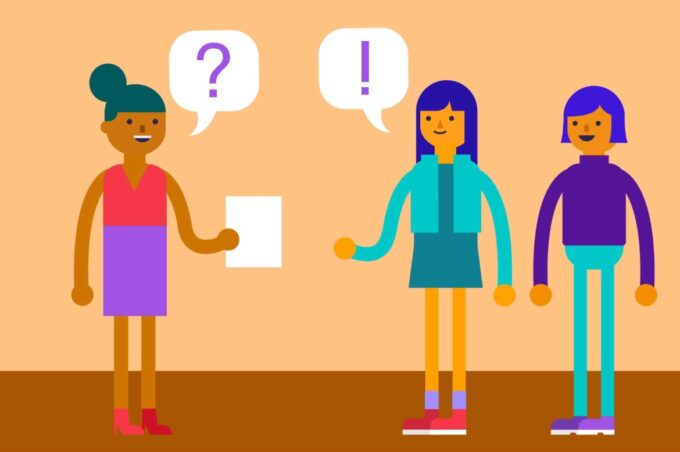Are you tired of staring at a blank page, struggling to craft the perfect essay introduction? Fear not, for there’s a refreshing and innovative approach that might just change the way you tackle your academic writing!
Welcome to the world of writing essay introductions at the end—a creative twist that has the potential to unleash a host of benefits. While the conventional method suggests starting with the introduction, we’ll be diving into the exciting world of placing it at the end of the essay.
At Academized.com essay writing service, we understand the challenges students face when crafting captivating introductions, and that’s why we’re here to explore this alternative approach that can revolutionize your writing process.
So, what exactly is this unorthodox approach, and how can it be advantageous? In this article, we’ll venture beyond the norms of essay writing and delve into the concept of reverse introductions. Instead of setting the stage right from the start, we’ll discuss the idea of penning your introduction after you’ve completed the body of your essay.
This unique perspective opens up a world of possibilities for providing a more contextually relevant and compelling introduction to your readers. Get ready to explore a fresh way of captivating your audience and keeping them engaged until the very end.
Throughout this article, we’ll unravel the power of context and relevance that comes with reverse introductions. We’ll also uncover how this approach can lead to more reader engagement and how you can implement it in your writing process.
By the time you reach the conclusion, you’ll be equipped with valuable insights and techniques to unleash the true potential of your essay introductions. Let’s embark on this writing adventure together and discover the benefits of crafting introductions at the end.
Understanding the Concept of Reverse Introductions

Source: pexels.com
Let’s dive into the exciting world of reverse introductions and uncover the magic of this unconventional approach. Instead of following the traditional route of crafting introductions at the beginning of your essay, reverse introductions advocate for penning them at the end.
This innovative technique challenges the status quo and offers a fresh perspective to captivate your readers. By waiting until the completion of the body of your essay, you gain a deeper understanding of the content and can craft an introduction that perfectly sets the stage for your readers, connecting the dots and ensuring a cohesive narrative.
The rationale behind reverse introductions lies in the power of context and relevance. When you embark on writing an introduction after exploring your essay’s main ideas, you gain a clearer vision of the arguments and evidence presented.
As a result, your introduction can seamlessly align with the overall message of your essay, drawing readers into the heart of your discussion. This approach ensures that your introduction isn’t a disconnected opening statement but rather a well-informed entry point into the world of your essay.
So, get ready to unleash the potential of reverse introductions and stay tuned for some incredible editing tips to perfect your essay’s opening.
The Power of Context and Relevance

One of the most compelling aspects of writing essay introductions at the end is the tremendous power of context and relevance it brings to your writing. By saving the introduction for the conclusion of your essay, you give yourself the unique advantage of having a comprehensive understanding of your own work.
This allows you to craft an introduction that perfectly aligns with the context and arguments presented in your essay, creating a harmonious and engaging flow from start to finish.
Your readers will appreciate the seamless connection between the introduction and the body of your essay, making it easier for them to grasp the significance of your work and stay immersed in your ideas.
This approach also enables you to adapt your introduction to the specific content and evidence showcased in your essay. As you delve into the core of your writing, you gain insights into the nuances of your arguments and the impact of your evidence.
Armed with this knowledge, your introduction becomes a tailored and relevant entry point for your readers, setting the stage for what’s to come in your essay.
By highlighting the key elements and themes discussed in your work, you provide your audience with a clear roadmap and ensure that they are well-prepared to navigate the exciting journey you’ve prepared for them.
So, get ready to wield the power of context and relevance as you unleash the potential of writing essay introductions at the end.
Engaging and Captivating the Reader

Source: community.thriveglobal.com
Unleashing the benefits of writing essay introductions at the end not only ensures a cohesive and relevant opening but also has a remarkable impact on reader engagement and attention.
By the time your readers reach the conclusion, they have already immersed themselves in the heart of your essay, absorbing the depth of your arguments and evidence. Now, armed with this newfound knowledge, you have the perfect opportunity to captivate them further.
Craft your conclusion with finesse, leaving a sense of curiosity and intrigue that compels your readers to journey back to the beginning of your essay and experience it anew. With this technique, you transform your conclusion into a gateway that invites readers to delve deeper into your work, sparking a desire to explore the full extent of your ideas and insights.
To master the art of engaging your readers, consider employing some effective techniques. End your essay with a thought-provoking question that lingers in the minds of your audience, enticing them to seek answers within your writing.
Alternatively, leave them with a powerful anecdote or a striking quote that reinforces the significance of your essay’s theme. Another approach is to use your conclusion as an opportunity to propose a challenge or call to action, inspiring your readers to take a stand or embark on further exploration of the subject matter.
By implementing these strategies, you create an unforgettable conclusion that sparks a lasting connection with your readers, igniting their curiosity and motivating them to fully immerse themselves in your thought-provoking essay.
So, get ready to unleash the full potential of your writing and captivate your readers with the power of reverse introductions.
Conclusion

Source: summer.harvard.edu
In conclusion, the concept of writing essay introductions at the end presents a refreshing and innovative approach that can revolutionize the way we engage our readers. By flipping the traditional order, we unlock a host of benefits that not only enhance the coherence and relevance of our essays but also captivate and enthrall our audience.
Embracing this alternative method empowers us to craft introductions that seamlessly align with the context and content of our essays, providing a more impactful and authentic opening to our work.
The power of context and relevance becomes evident as we draw readers into the heart of our essay before presenting them with an introduction tailored to their newfound understanding. By skillfully engaging our readers in the conclusion, we leave them craving more, inviting them to revisit the beginning with newfound enthusiasm.
As we embrace this technique, we open the door to endless possibilities for crafting captivating and thought-provoking introductions that captivate our audience from the very start.
So, dear writers, let us unleash the full potential of our essay writing by considering the power of reverse introductions. By experimenting with this alternative approach, we can transform our essays into compelling narratives that leave a lasting impression on our readers.
The path to an engaging and memorable essay begins here, and the possibilities are endless. Embrace the change, take the leap, and embark on a journey of discovery, as you unleash the true artistry of your writing and captivate your readers like never before. Happy writing!

